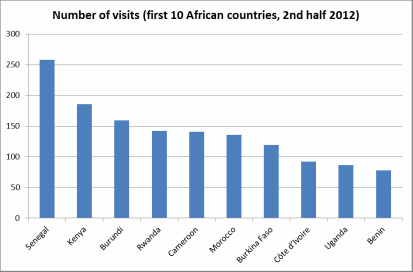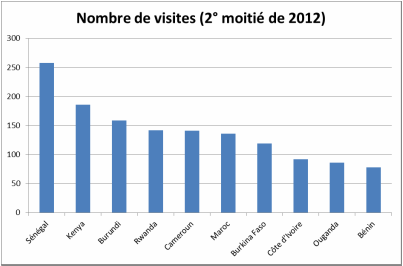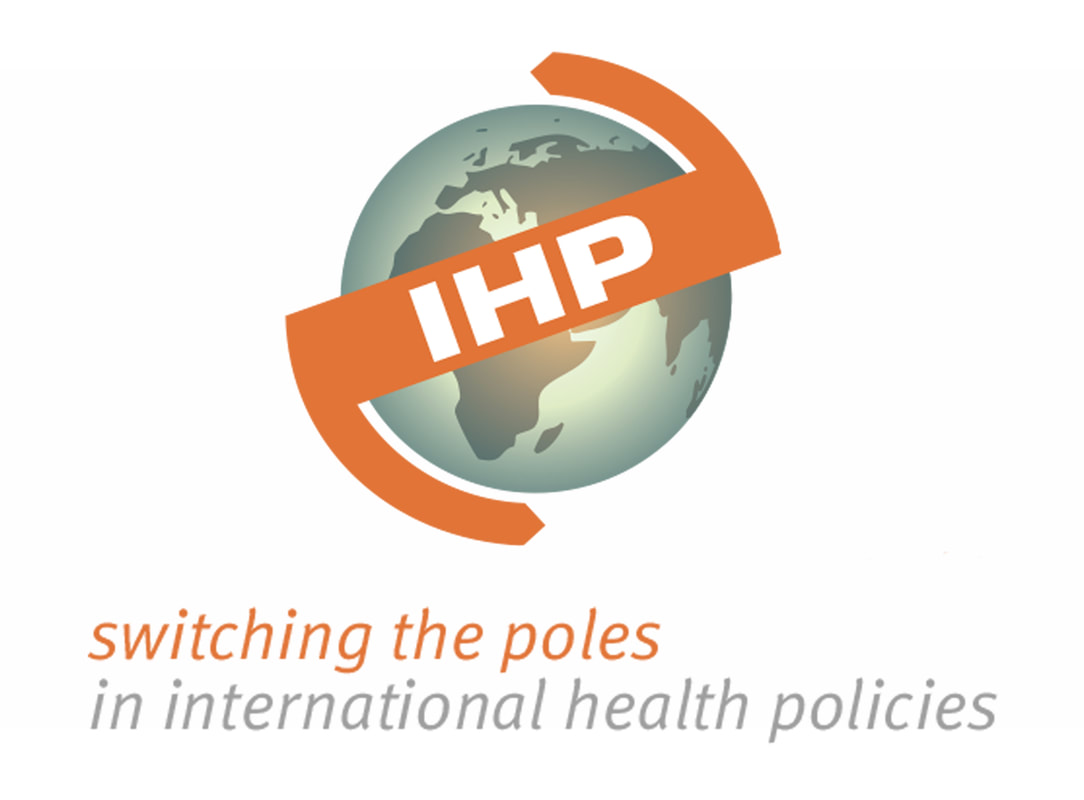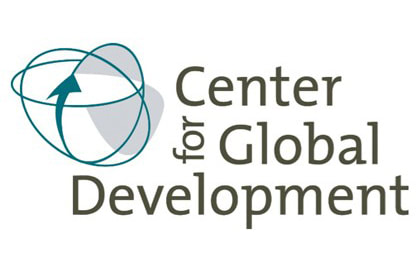It seems that your article comes at an interesting point in the debate on Performance-based Financing (PBF). Could you summarize its key messages?
Maria Bertone: The paper has two objectives. First, it aims to contribute to the debate at a conceptual level. The idea is to articulate different concepts from New Institutional Economics to facilitate the study of health systems. Specifically, the paper proposes a simplified analytical framework to analyse changes in institutional arrangements structuring a health care system. For the purpose of illustrating this type of analysis, the article includes an application of the framework to two pilot PBF schemes in Burundi. So this is the second aim of the work, drawing lessons on the design and implementation of PBF schemes. Achieving this second aim helps corroborate and validate our theoretical proposition.
While the paper will not contribute much to the PBF programme in Burundi (indeed, long before the publication of this study, a unified PBF model has been implemented across the country), some more general lessons could be interesting, such as, for example, on how to assess PBF schemes. Although we agree on the need for impact studies, the article notes that the institutional arrangements of each PBF schemes are substantially different and that impact evaluations should be interpreted taking into account the particular nature of these arrangements.
Several authors have recently advocated for a “complex adaptive systems” approach to study of health systems. Such a suggestion was made also for PBF, in particular in order to identify unexpected effects. Have you addressed this recommendation in your paper?
Bruno Meessen: I'm not very familiar with this approach. I'd be curious to see what findings it may provide when applied to PBF. One point that I’d like to make, though, is that I believe it would be misleading to argue that we do not have enough conceptual “keys” to analyse PBF, its agenda and its effects. One of the messages of our paper is that New Institutional Economics is a powerful body of theory to better understand how to reform health systems. Personally, I can certainly say that it helped me to structure my own theoretical and political reflections in the past decade.
In this regard, perhaps the article will he also help avoid a misunderstanding. It will surprise some physicians reading this interview, but I've heard some criticisms based on the fact that "the problem is that the PBF was designed by doctors, not by health economists. PBF proposers do not know the vast literature on providers payment mechanisms ". With this article, we also wanted to show that in fact the theoretical foundations of PBF are substantial. They may actually be even more inclusive than the literature of health economics. Indeed, to address issues such as the redistribution of roles in a system or the introduction of new ‘rules of the game’, Organization Economics could be a better, more relevant toolkit.
Maria, what would you suggest to a young researcher who wants to apply this analytical framework, for example, looking at PBF in another context, different from that of Burundi?
MB: To adapt and apply the analytical framework to a specific situation has been an interesting, challenging exercise for me. It forced me to look at the two schemes from a new perspective. I was surprised by the fact that it allowed me to find out new aspects and better understand why the two schemes functioned differently.
The application of the framework certainly needs some theoretical knowledge and understanding of the principles of New Institutional Economics. At best, we have a “sketch” on which to base the analysis, and it remains to the researcher to draw the full picture. Although a social science background is undoubtedly useful for the task, we hope that the paper will facilitate dialogue between economists and health system researchers. Besides, it allows establishing links with previous work (such as that of Thomas Bossert) as well as more recent one (e.g., Kenneth Leonard’s).
Young researchers will also appreciate the use of a case study design and the demonstration that case studies could be helpful and legitimate to look at PBF interventions. We could certainly use more the ‘comparative case study’ approach.
Bruno, Maria mentions this is a “sketch” of an analytic framework. In what direction do you see the scientific developments in this area of research, and particularly in the field of PBF?
BM: There are numerous possible developments. My recommendation to researchers who do not want or cannot carry out an impact study is to focus on the factors that could explain why the PBF scheme does not obtain the results we had hoped for (or why it achieves something that wasn’t planned for!). The reasons for the “failure” of a PBF scheme could be different, but they would probably fit into three broad (non-exclusive) categories: the design was misconceived, or it is the implementation process that is inappropriate, or the theory underlying PBF is failing.
Our analytical framework is primarily intended to study the problems in the first category: a mismatch between design and context, which leads ultimately to sub-optimal results. In other words, cases when the PBF scheme was poorly designed (such as, for example, when the PBF design is limited to “cut/paste”). In this sense, future developments of our analytical framework could add more details in the description of institutional arrangements, property rights and power relations between actors.
Then, there are the problems in a second category, during the implementation phase. As shown in the recent literature on use fee removal, to document these issues is relatively trivial and it will probably not be helpful to burdened them with too many theoretical elements. I'm not sure, therefore, that our framework is of help for such cases.
But there is a third type of problems, i.e. those which could arise from a failure in the theory underlying PBF. Further research could help to reduce this risk by strengthening the theoretical foundations of PBF. Along this line, for example, well equipped researchers in social sciences and empirical methods could dig further, in order to better understand the underlying psychological mechanisms, including cognitive and motivational aspects. The theoretical base of PBF is indeed the assumption of the existence of the homo oeconomicus. The strength of this idea for modelling and prediction is well established, but it remains a simplification of human psychology. At the moment, our framework still leaves undetermined the question of the interaction between extrinsic motivation and intrinsic motivation. We do not say anything about how individuals change their preferences, develop expectations or process the information they are given. These are all aspects that can have an important weight in the effectiveness of the revision of institutional arrangements. Research developments in this sense are a very ambitious program that requires to get rid of one’s own prejudices and constructs and focus on empirical work. Someone like Kenneth Leonard is leading the way in this sense.
Going back to your study in Burundi. Maria, can you summarize the main results of the comparison of the two PBF pilots in Ngozi and Bubanza provinces?
MB: Our analysis explains how and why the two schemes worked differently. I would emphasize here three results.
The first concerns the role of the Purchasing Agency. We found that its role was organized differently in the two projects. In Ngozi, the purchasing function was held by a committee consisting of representatives of the implementing agency (Swiss Tropical Institute) and of the local health hierarchy, chaired by the Provincial Health Director. In Bubanza, the role was assigned to a separate, independent agency run by the NGO (Cordaid). While this second approach allowed for a much clear definition of responsibilities and effectively limited the conflicts of interest, it also had a downside, as it created an excessive transfer of ‘decision rights’ (a key concept in New Institutional Economics) to an external agency outside the State structure. For the record, the question on which actor should play the purchasing function has generated a lively debate in Burundi in 2009. The solution found by the Ministry of Health and its partners opted for an innovative, ‘mixed’ model which ensured the involvement of the State as well as that of some external actors.
Secondly, our analysis shows that support and guidance provided to health facilities during the introduction of a PBF – what is often referred to as ‘coaching’ by PBF practitioners, play a key role in PBF schemes. Indeed, such support is crucial to help healthcare providers to understand the content of the new institutions, i.e. the new ‘rules of the game’, which are put in place. In our analysis using the analytical framework, it appears that coaching is in fact a 'soft' but powerful enforcement mechanism for the adoption of new rules. In PBF schemes, the main enforcement mechanism is usually considered the verification procedures, but it is important to highlight that other mechanisms may also play an important role and that the purchasing agency has a variety of instruments at its disposal.
This brings us to a third point. One of these instruments is the use of rhetoric. We found a difference between the rhetoric on some issues and the actual practices of the actors on the ground. For example, in Bubanza, experts interviewed but also their documents of reference put forward the concept of the ‘black box’, which refers to the total autonomy of providers in their use of financial resources. In practice, though, the close coaching that the purchasing agency was providing, as well as the use of some planning tools (known to many as ‘business plans’ which in the ‘PBF language’ means ‘action plans’) reduced this autonomy. This is not to say that business plans or coaching are not useful – quite the opposite!, but it is to highlight how the design and the rhetoric around it can differ from the actual implementation. Jean-Benoît Falisse made a similar observation when he documented a similar disconnection with reference to the idea of channelling the ‘users voice’ through the verification procedures, in early PBF schemes in Burundi.
A difference between the plan and the practice is quite frequent in health policy. For instance, Freddie Ssengooba in his analysis of the Uganda performance-based contracting pilot (note that this scheme was quite different from the current PBF interventions elsewhere in Africa) observed such a ‘policy-implementation gap’. He argued that this difference was a response to the difficulties in implementation.
Our institutional analysis goes beyond this. In the case of Burundi, it suggests that the gap could also stem from the rhetoric of the plan. Especially at the initial stages of the introduction of the scheme, a coherent and radical rhetoric could be a helpful cognitive mechanism to clarify the new rules of the game and stress the break with previous practices. This casts a different light on the PBF rhetoric, which we know irritates some observers: in fact, it may have an internal function to facilitate the adoption of the new institutions.
We leave it to the readers to judge our work. But we hope that these three examples show how a thorough institutional analysis of PBF interventions can be helpful. We are certainly very interested in hearing comments, insights, and opinions.








